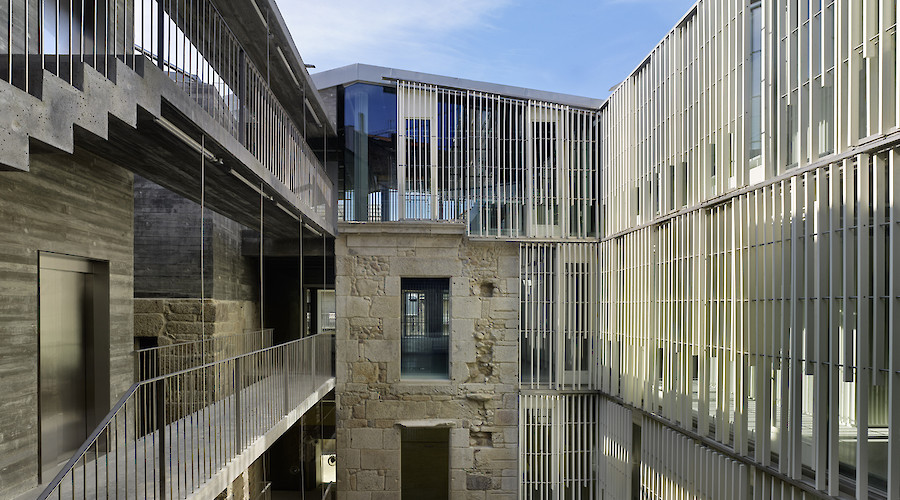Urban Transformation: Iberoamerican Architecture and Urban Spaces

This photography exhibition aims to show the power of architecture to transform urban spaces in Iberoamerican countries.
The exhibition features architectural projects in countries across Latin America, Spain and Portugal, including photographs of Vigo’s new Property Registration Offices, and Curro Square in Noia, by Spanish architectural photographer Héctor Santos-Diez:
Vigo’s Property Registration Offices
- Location: Vigo, Galicia, Spain.
- Architects: Irisarri + Piñera.
Seeking both to modernize public administrative buildings and revitalize Vigo’s old town, a group of four historic residential buildings were purchased by the city in 2011 to be transformed into the new Property Registration Offices. The buildings, adjacent to one another, date back to different time periods from the 18th to the 20th century, and each one presented diverse elements of historical value.
The rehabilitation project sought to convert the premise into a functional and unified office building adapted to the modern standards of accessibility, sustainability, and technology, while preserving and highlighting original features of the historical buildings. The success of this project was recognized, and the building was awarded at the 13th Spanish Biennial of Architecture and Urbanism.
Rehabilitation of Curro Square in Noia
- Location: Noia, Galicia, Spain.
- Architects: Salgado e Liñares + Santiago Rey.
Praza do Curro (Curro Square) in the Galician town of Noia has always been the main public space of Noia’s old town. However, during the 20th century, the plaza suffered from constant deterioration, causing local citizens to abandon this central space. Sidewalks were occupied with lines of parked cars, cracked pavements were not repaired, and historical buildings were neglected as taller buildings began to arise.
Since the beginning of this rehabilitation project, the architects understood that the intervention could not be neutral, and major changes would be done to recover the spirit of the plaza. In order to do so, the space was turned into a pedestrian zone, and surviving pieces of stone pavement were reused in a patterned floor to invoke the architectonic duality of the space and to impose a strong character to this new walkable area, returning the plaza back to the city.
About AACIA
The Iberoamerican Cultural Attachés Association is a non-profit association with the mission to promote, disseminate and preserve the heritage, culture and art of Ibero-America in the Washington, D.C. area, working actively in building bridges between Latin America, Portugal and Spain, with the United States. This mission is achieved through cultural activities that bring together a varied audience and outreach media.
The cultural activities the Association has organized showcase the cultural values of Ibero-America and the immense diversity that depicts the essence of these countries. In doing so, the events with most relevance have been the Ibero-American Film Showcase in D.C., the annual Noche Ibero-Americana fundraiser event, and the Ibero-American Photography Exhibition.
Free opening reception on Friday, October 18, from 6:30 pm to 10 pm. RSVP required.